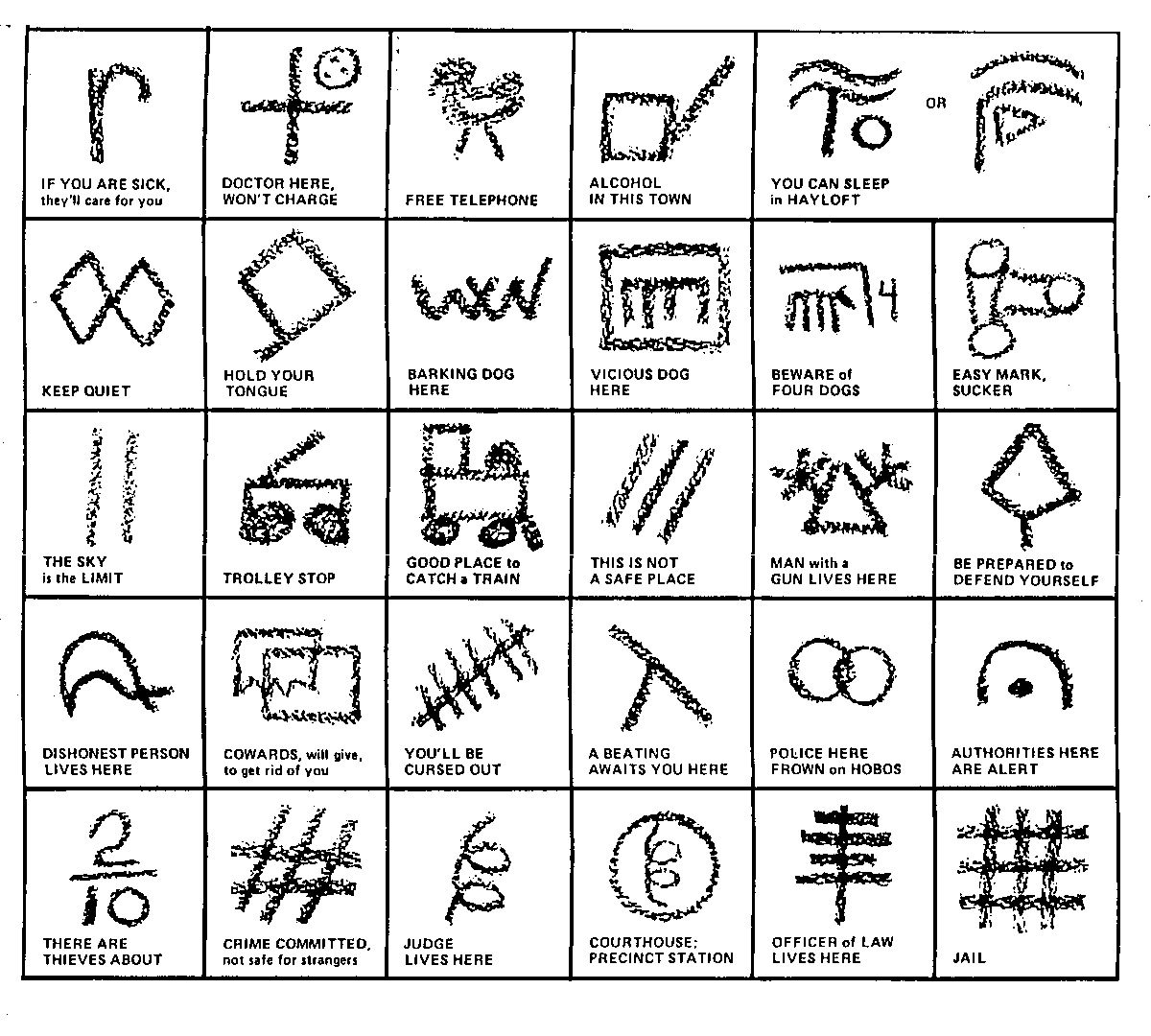

In the Middle Ages I’d estimate serfs worked around 12, varying by season. Taking into account domestic work, such as chores, errands, getting groceries and cooking, etc… the average person today in America works about 14 hours a day. Probably since about the industrial revolution, where it was also common for wives and children to work long hours in factories. The fact is, this is the hardest working generation in a long, long time. Nowadays you need two working adults just to scrape by, and you certainly can’t support your elderly or a ton of kids on that like you could back in the day. People in the 1930s actually had much smaller workloads on average than the modern day, as a “normal” household only had one working adult, and one full-time stay at home mom. Meanwhile… did these people really ignore the whole section up there about these markings being used to plan and carry out scams? Suckers, easy marks, talk religious for a handout, tell a sob story… the hobos of the 1930s – a time affected by massive economic collapse, just like today – were not any more ethical or any more likely to work. Most ex-homeless stories, they took 5+ YEARS to be able to get off the streets! It happened to many people we wouldn’t have thought back in 2008, PTA moms and suburban dads, losing jobs and homes, means to support their kids… unless you have family to help you out, once you’re that low it’s near impossible to pull yourself out.

Most of us are pretty close to being them, so it’s pretty dumb classism to think the very poor living in tent slums must be so because of their own actions – that’s some victim-blaming logic to make yourself feel safe. There’s just no opportunity, especially not legal or socially acceptable opportunity. And that INCLUDES the crazy and drugged up ones! They’re still a bit dangerous cuz of the unpredictable nature of such things, but damn are they trying. I’m fairly involved with the homeless community, and most are scraping and clawing on the daily to try to get ahead, are honest and kind and look out for each other and anyone who helps them. We just got used to people suffering and dying and learned to ignore it, like what’s happening with corona now. It didn’t used to be so bad… the crash of 2008 did a number on us and we basically never recovered. My dude I’m literally from Cali, and we’ve got a massive homeless pop in my city. The hobo symbols in the photos below were drawn onto a small model of an early-1930s American town.
HOBO SIGNS MANUAL
Two shovels - work available (shovels, because most hobos performed manual labour).

HOBO SIGNS FREE


 0 kommentar(er)
0 kommentar(er)
